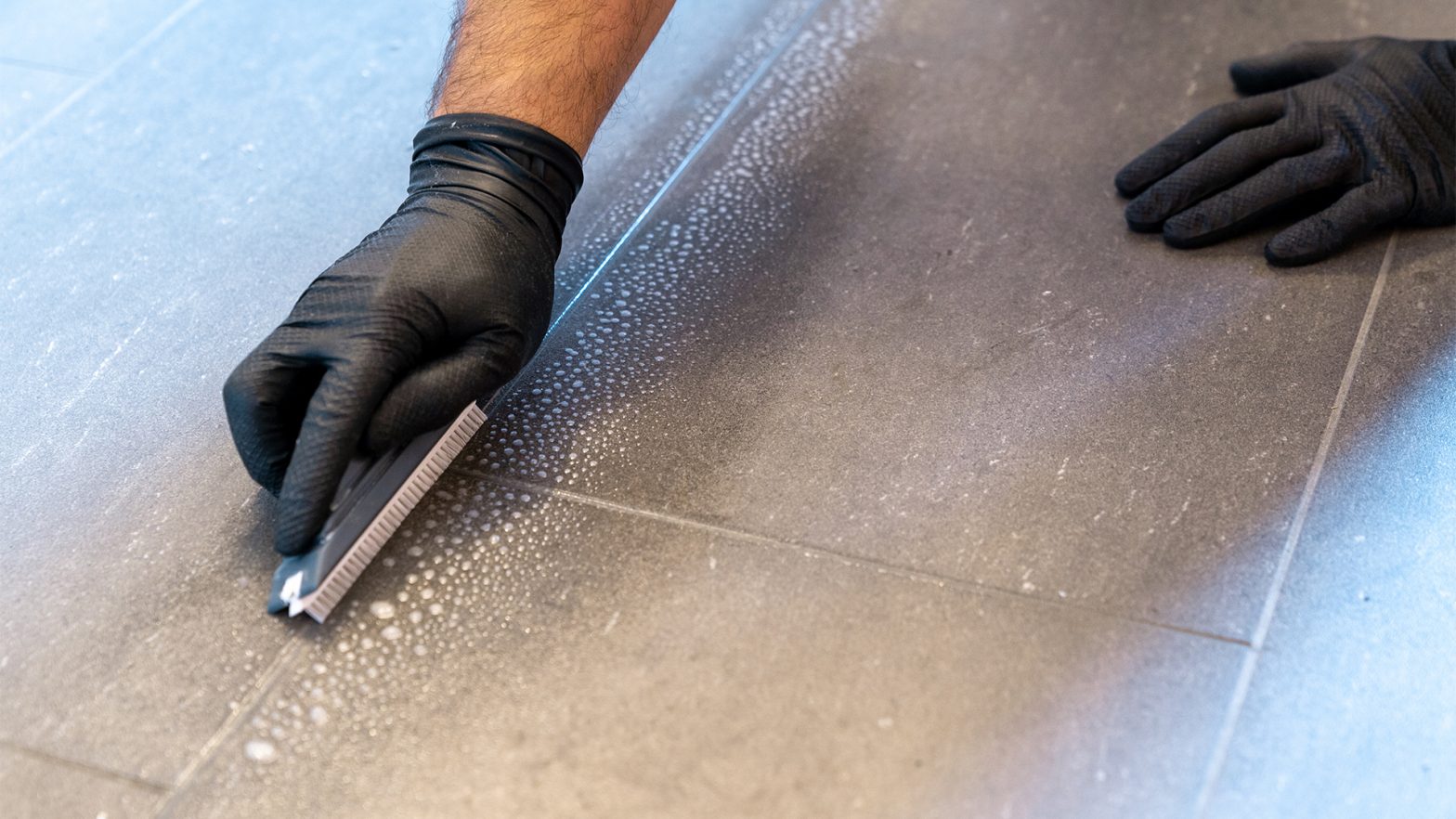
Nothing quite ruins the look of a well-tiled home than damaged grout. Whether it’s in your bathroom, kitchen, garden or even in your bedroom, wear and tear of your grout can detract from your aesthetic, reduce the value of your home and ultimately lead to serious issues like water ingress and leaking ceilings.
Google search data indicates that more Brits than ever are interested in DIY grouting. There are over 18,000 UK Google searches each month for “grouting”, a 22% increase on this time last year – but which elements of grouting do they need to know about?
Examining that data, the tiling experts at Instarmac have identified Britain’s most pressing questions when it comes to DIY grouting – and their top tips are on hand to provide the answer. Whether you’re looking to apply grout onto a non-standard substrate, clean and maintain your grout or soften it for removal, effortless grout management has never been easier.
How long does grout take to dry? (monthly searches: 1000)
The amount of time your grout will take to dry will depend on the type and purpose of your installation. You can typically expect exterior grouting to take longer to dry than interior grouting, usually due to the stronger bond strength required with exposure to the elements. Other factors will also come into play, such as the temperature and substrate.
You can typically expect standard grouts to set within 48-72 hours, but rapid set grouts can hard set in 12 hours. It’s best to choose a grout that’s optimised for your chosen purpose for best results. Some grouts are designed for areas where movement or vibration is more likely, while others might be specifically formulated to perform best when applied in smaller joint widths.
How to clean grout in the shower? (monthly searches: 880)
In most cases, shower grouting is exposed to water more consistently than any other area of the home. Grubby grout can really detract from the look of your interior, but it’s surprisingly easy to clean.
A homemade mixture of one part water and two parts bicarbonate of soda can be used to tackle light dirt, but specialist grout cleaners should be used for the tougher stuff. It can also help eliminate film and hazing left over, ensuring the long-term look of your grout.
How to remove grout (monthly searches: 480)
If you’re looking to replace damaged or mouldy grout from a previous install, there are a few ways to go about it. Did you know you can replace your grout without removing your existing tiles?
You’ll either need a specialist removal tool called a grout rake, or a multi-tool with a grout removal blade. A scraper will also be useful to get out any pesky bits of grout left between the tiles. Be sure to suit up with a bit of PPE – protective goggles and safety gloves are key.
Alan Collins, Technical Site Support and Training Manager at Instarmac, advises: “Just run the blade of your tool around the edge of all the tiles, being careful not to damage the front of the tiles themselves. Scrape out any excess with your scraper before using a damp sponge to dry the tiles.”
If they’ve been installed properly the first time around, they’ll still be securely fitted to the wall. Wait for them to fully dry and then you’ll be able to reapply your grout and give your existing tiles a new lease of life.”
Can you grout over grout (monthly searches: 390)
While it is technically possible to apply new grout directly over the top of your existing grout, we’d never recommend doing this. You’re unlikely to achieve the same adhesive strength as grouting onto a proper substrate, and you’ll increase the risk of your grout installation failing and water ingress taking place.
Existing grout should always be removed before applying new grout – and with the right tools, it’s easy to remove your grout.
What colour grout to use with white tiles? (monthly searches: 390)
Gone are the days when grout was supplied in one colour – meaning that today’s Brits are spoilt for choice when it comes to their interior design. However, making that choice can be difficult, especially when you’re looking for a subtle grout to fit perfectly alongside your white tiles.
Collins comments: “You no longer have to be limited when it comes to choosing the perfect grout for your home. White grout feels a little sterile when used alongside white tiling, so it’s great to have an extensive selection of different grout colours available to choose from!”
If you’re looking for a classier feeling, darker grouts coupled with white tiles can put a sophisticated spin on tiling in kitchens and bathrooms alike. Try shades like Storm Grey or even Cosmic Black for a striking contrast look.
How much grout do I need? (monthly searches: 320)
There are a number of factors that will affect the amount of grout you need for your installation project. For larger tiles, wider grout lines may be required to help ensure uniform alignment and prevent water ingress. Smaller tiles are more suited to thinner grout lines, which means less grout is required in total.
If you know the overall area of your grout installation and the size of each individual tile, finding out how much grout you need is simple. Use a quantity calculator to make sure you get the right amount for your job – and add 10% extra to ensure you’ve got enough if spillage.
Thanks to the growing amount of information available to the consumer, more people than ever are able to renew, replace and maintain their grouting themselves. The increase in search volume for grouting-related DIY terms indicates that we’ll see more people than ever opting to take matters into their own hands in 2024.






























